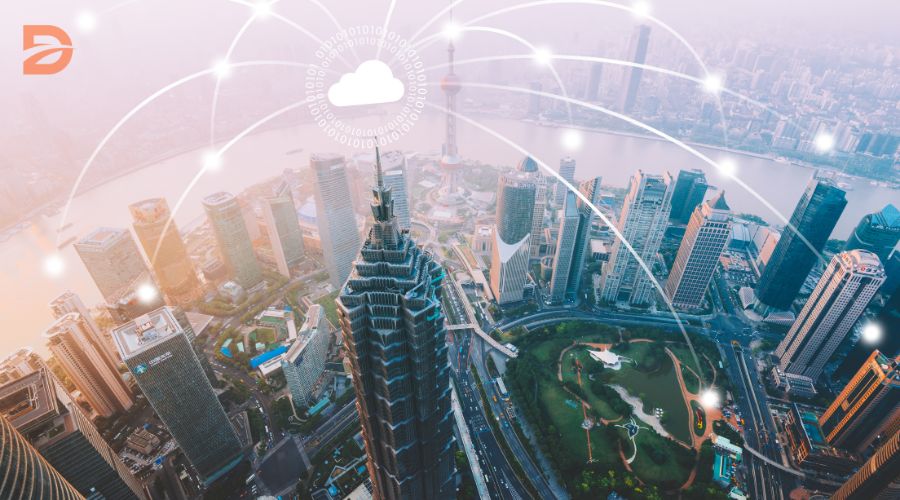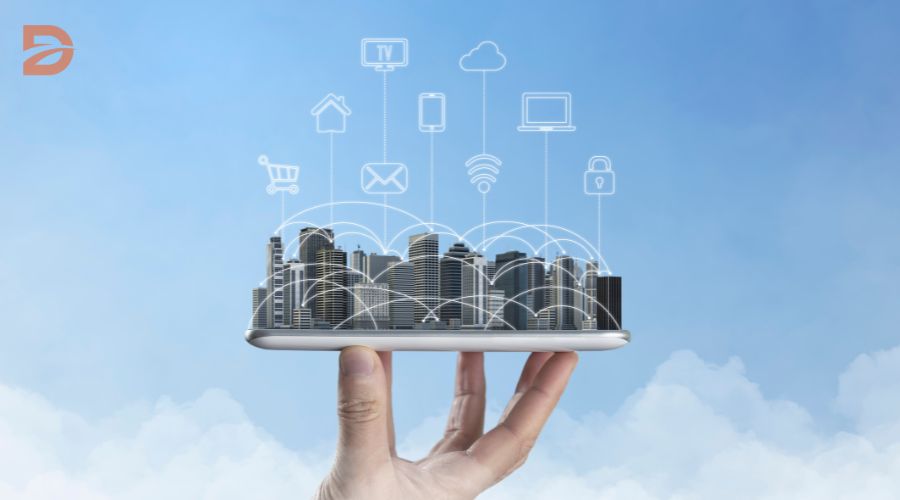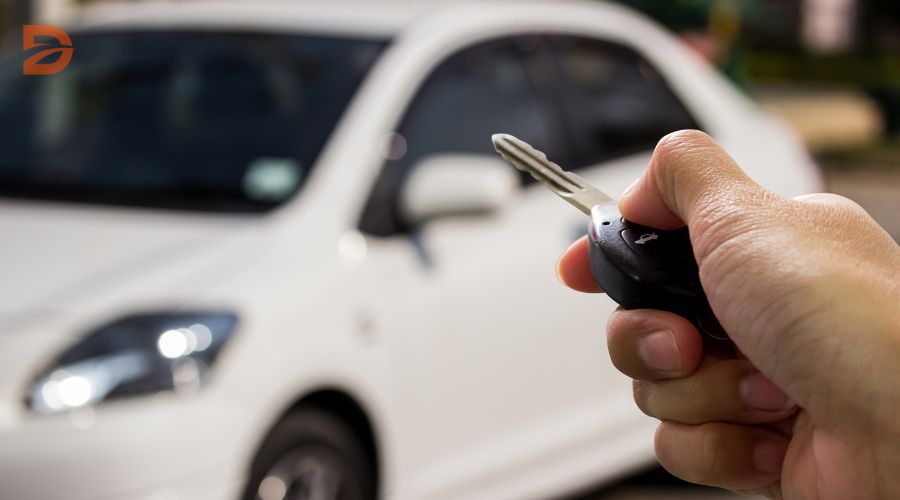By the end of the decade, V2X (vehicle-to-everything) communication is projected to become a $1 billion business, revolutionizing transportation, infrastructure, and urban mobility across the globe. This emerging technology enables real-time data exchange between vehicles, road infrastructure, pedestrians, and other elements of the driving environment, paving the way for enhanced road safety, reduced traffic congestion, and a more sustainable transportation system.
Key Takeaways
- V2X technology is set to become a $1 billion business within the next five years, with widespread adoption expected by 2027.
- Leading automakers like BMW, Mercedes, and Renault are heavily investing in V2X technology to advance autonomous driving capabilities.
- V2X communication enables real-time data exchange between vehicles, infrastructure, and other road users, improving safety and traffic management.
- V2X technology can reduce traffic congestion and emissions by optimizing traffic flow and travel times.
- Widespread deployment of V2X infrastructure is underway in the U.S. and Europe, with the potential to transform urban mobility in smart cities.
What is V2X Technology?
V2X, or “vehicle-to-everything,” is a cutting-edge radio communications technology revolutionizing the automotive industry. This innovative system enables real-time data exchange between vehicles and their surrounding environment, including other vehicles, infrastructure, pedestrians, and even cyclists. By facilitating seamless connectivity, V2X technology is poised to enhance road safety, traffic efficiency, and environmental sustainability in smart cities.
Explanation of V2X and its Role in Automotive Communication
At the core of V2X technology lies the ability to transmit and receive critical information between vehicles and their surroundings. This communication can take various forms, such as V2V (vehicle-to-vehicle), V2I (vehicle-to-infrastructure), V2P (vehicle-to-pedestrian), and V2C (vehicle-to-cloud). By continuously sharing data, vehicles can collectively create a more comprehensive understanding of the road conditions, hazards, and the movement of other road users, ultimately enhancing driver awareness and decision-making.
Types of V2X Communication: V2V, V2I, V2P, and V2C
The different types of V2X communication play crucial roles in improving road safety and efficiency:
- V2V (Vehicle-to-Vehicle): Vehicles exchange real-time data about their speed, position, and trajectory, allowing them to detect potential collisions and take preventive action.
- V2I (Vehicle-to-Infrastructure): Vehicles communicate with roadside infrastructure, such as traffic signals and signs, to receive information about road conditions, construction zones, and traffic patterns, enabling more efficient navigation.
- V2P (Vehicle-to-Pedestrian): Vehicles detect the presence of pedestrians, cyclists, and other vulnerable road users, providing alerts to both the driver and the person outside the vehicle, increasing their safety.
- V2C (Vehicle-to-Cloud): Vehicles connect to a central cloud system, sharing and receiving data that can be used for traffic management, fleet optimization, and predictive maintenance.
By seamlessly integrating these communication modes, V2X technology lays the foundation for a more connected, intelligent, and safer transportation ecosystem in smart cities.
V2X and Road Safety
The integration of V2X technology holds immense potential in enhancing road safety and protecting vulnerable road users. By enabling seamless communication between vehicles, infrastructure, and pedestrians, V2X systems can significantly improve driver awareness and accident prevention.
Enhancing Driver Awareness and Accident Prevention
V2X technology, specifically Vehicle-to-Vehicle (V2V) communication, allows cars to exchange critical real-time data such as speed, location, and direction of travel. This information can help drivers anticipate potential collisions and take preventive actions, ultimately reducing the risk of accidents.
Moreover, Vehicle-to-Infrastructure (V2I) communication enables cars to interact with urban infrastructure like traffic lights and road signs, providing drivers with valuable insights to navigate more safely and efficiently.
Protecting Vulnerable Road Users with V2P Technology
- Vehicle-to-Pedestrian (V2P) technology, available on smartphones and other smart devices, empowers pedestrians to exchange location data with nearby vehicles.
- This capability can warn drivers if a pedestrian, such as a child or elderly person, requires more time to cross the street, enhancing their safety and protection.
- V2P technology is a crucial component of V2X, as it helps safeguard some of the most vulnerable road users, including cyclists, wheelchair users, and those with reduced mobility.
By seamlessly integrating these V2X capabilities, cities can create smarter, safer, and more connected transportation ecosystems, ultimately improving the overall driving experience and protecting all road users.
| V2X Technology | Key Benefits |
|---|---|
| Vehicle-to-Vehicle (V2V) | Enables real-time data exchange between vehicles, enhancing driver awareness and accident prevention. |
| Vehicle-to-Infrastructure (V2I) | Facilitates communication between vehicles and urban infrastructure, providing drivers with valuable insights to navigate more safely and efficiently. |
| Vehicle-to-Pedestrian (V2P) | Empowers pedestrians to exchange location data with nearby vehicles, enhancing the safety and protection of vulnerable road users. |
By leveraging the power of V2X road safety technologies, cities can create a more connected and secure transportation ecosystem, driving down accident rates and protecting vulnerable road users.
V2X communication, smart city integration
The integration of V2X technology with smart city infrastructure is a crucial step in enhancing road safety and transportation efficiency. V2I (Vehicle-to-Infrastructure) communication enables vehicles to exchange vital information with roadside units (RSUs) and other infrastructure elements, promoting safer and more coordinated journeys.
Thousands of RSUs equipped with V2X devices and cameras are already in use across the United States, Europe, and Asia, with deployment projects underway in more than 25 US states and 20 EU member countries. This global adoption of V2I technology aims to assist smart cities and make roads safer worldwide.
Integrating Vehicles with Smart City Infrastructure
V2I technology allows vehicles to communicate with various components of the smart city infrastructure, such as traffic signals, road signs, and even emergency services. This two-way communication provides drivers with real-time information about road conditions, traffic congestion, and potential hazards, enabling them to make informed decisions and respond quickly to changing situations.
For example, V2I can alert drivers to the status of upcoming traffic signals, allowing them to adjust their speed and position accordingly. This not only improves traffic flow but also reduces fuel consumption and emissions, contributing to the overall sustainability of the smart city.
| V2X Capabilities | Percentage of Respondents Who Valued the Benefits |
|---|---|
| Expanding the range and capabilities of conventional blind spot sensors | 96.4% |
| Real-time information about hazards like black ice, slippery roads, and objects on the road | 97% |
| Decreasing trip durations for emission reduction | 94% |
| Interacting with traffic lights to optimize traffic signal cycles | 96.3% |
| Enhancing response times for emergency services during critical situations | 96.8% |
The seamless integration of V2X technology with smart city infrastructure is essential for realizing the full potential of intelligent transportation systems and fostering sustainable, efficient, and safe urban mobility.
Traffic Management and Efficiency
V2X technology is revolutionizing traffic management and efficiency in smart cities. By enabling seamless communication between vehicles, infrastructure, and road users, V2X is driving remarkable improvements in traffic flow and congestion reduction.
Reducing Congestion and Optimizing Traffic Flow
One of the key benefits of V2X technology is its ability to reduce traffic congestion. Through features like vehicle platooning, V2X allows a group of vehicles to coordinate their movements, accelerating and braking simultaneously to maintain a specific distance. This not only decreases the risk of collisions but also minimizes the disruption caused by sudden lane changes or braking.
Moreover, V2X Roadside Units provide real-time information to vehicles about road conditions, enabling them to slow down or change lanes proactively, avoiding the need for sudden braking that can lead to traffic jams. An estimated 146 million connected vehicles are projected to be on the road by 2030, a substantial increase from 31.3 million in 2017 within the transportation sector.
Initial deployments of V2X technology have already shown promising results, with a decrease in congestion by 25% and vehicle stopping by 30% at intersections, as indicated by Rapid Flow Tech. This optimization of traffic flow not only enhances the driving experience but also contributes to significant reductions in fuel consumption and emissions.
“The National Highway Traffic Safety Administration (NHTSA) study highlights that connected vehicle technology has the potential to reduce up to 80% of crashes not involving impaired drivers.”
As V2X technology continues to evolve and integrate with smart city infrastructure, the potential for even greater traffic management and efficiency is evident. By combining V2X with advanced AI algorithms, traffic signals can be dynamically adjusted based on real-time data, ensuring a smooth, efficient flow of vehicles and improved overall transportation in smart cities.
Automotive Industry Support
The automotive industry has widely embraced the transformative potential of V2X (Vehicle-to-Everything) technology, recognizing its ability to enhance road safety, traffic efficiency, and environmental sustainability. Leading automakers and technology companies have been at the forefront of V2X adoption, driving the connected vehicle revolution.
Automakers Accelerating V2X Adoption
Several prominent automakers have expressed strong support for V2X technology and are actively integrating it into their vehicle lineups. Audi, BMW, Daimler, Ford, Land Rover, Renault, Tesla, and Toyota are among the automakers at the forefront of V2X implementation, equipping their vehicles with the necessary communication capabilities.
Beyond traditional automakers, companies like Qualcomm, Bosch, Huawei, and Intel are also playing a vital role in the development of intelligent transportation systems leveraging V2X connectivity. These technology leaders are working to advance the infrastructure and hardware necessary to enable seamless V2X integration across the automotive ecosystem.
The rapid adoption of V2X technology by the automotive industry underscores its transformative potential in enhancing road safety, traffic management, and environmental sustainability. As the connected vehicle market is expected to generate $273 billion in revenue by 2026 and the C-V2X market is projected to reach $1.1 billion in size by 2026, the industry’s commitment to V2X is poised to shape the future of transportation.
Role in Autonomous Driving
V2X (Vehicle-to-Everything) technology plays a crucial role in the development and deployment of autonomous vehicles. It provides vehicles with real-time information about their surroundings, enabling them to navigate complex traffic situations and make informed decisions. This technology is essential for the safe and efficient operation of autonomous vehicles.
Autonomous driving (AD) relies on on-board sensors for environment perception, while cooperative autonomous driving (CAD) emphasizes information interaction among different entities in intelligent road systems. V2X communication modes, such as vehicle-to-vehicle (V2V), vehicle-to-infrastructure (V2I), and vehicle-to-pedestrian (V2P), allow autonomous vehicles to exchange critical data, improving their situational awareness and decision-making capabilities.
The adoption of V2X technologies has been reported to prevent about 439,000 to 615,000 accidents, 987 to 1366 deaths, and 537,000 to 746,000 property damage incidents per year in the USA. This highlights the significant potential of V2X for ensuring road safety, fuel efficiency, and manageable traffic flows.
V2X systems are used for various functions in highly automated vehicles (Level 4 and above), aiming to cope with different road situations effectively. For instance, cooperative adaptive cruise control (CACC) uses V2X to maintain distance between vehicles, improving fuel efficiency and road safety. Additionally, V2X technology enables connected automated vehicles to attenuate velocity perturbations in human-dominated traffic environments.
| V2X Communication Modes | Description |
|---|---|
| Vehicle-to-Vehicle (V2V) | Enables direct communication and data exchange between vehicles, allowing them to share information about their position, speed, and other relevant data. |
| Vehicle-to-Infrastructure (V2I) | Facilitates communication between vehicles and roadside infrastructure, such as traffic signals, signs, and sensors, providing vehicles with information about the surrounding environment. |
| Vehicle-to-Pedestrian (V2P) | Allows vehicles to communicate with pedestrians and vulnerable road users, alerting them to potential hazards and ensuring their safety. |
| Vehicle-to-Network (V2N) | Enables vehicles to connect to the wider communication network, providing access to cloud-based services and data sources that can enhance the vehicle’s capabilities. |
As autonomous driving technology continues to evolve, the integration of V2X capabilities will be crucial for ensuring the safe and efficient operation of self-driving cars. By leveraging real-time data exchange, autonomous vehicles can make more informed decisions, anticipate potential hazards, and adapt to changing traffic conditions, ultimately contributing to a safer and more connected transportation system.
Environmental and Sustainability Benefits
V2X technology is not only transforming road safety and traffic efficiency, but it also holds remarkable potential for environmental sustainability. By optimizing traffic flow and reducing congestion, V2X communication can significantly contribute to a more eco-friendly transportation system.
The integration of V2X technology with smart city infrastructure allows for real-time traffic monitoring and coordination, which can mitigate accidents caused by human errors, alert drivers to potential hazards, and optimize traffic flow. This, in turn, leads to a reduction in fuel consumption and greenhouse gas emissions.
Reducing Emissions and Fuel Consumption
According to the 2021 INRIX Global Traffic Scoreboard, traffic congestion in the United States costs the average driver $564 in lost productivity and the country a staggering $53 billion annually. V2X technology can help address this issue by cutting unnecessary fuel consumption and productivity loss in the transport industry.
V2X-enabled traffic coordination applications, such as SPaT (Signal Phase and Timing) and lane merge assists, have been shown to significantly reduce congestion and fuel consumption. Furthermore, V2X communication can help vehicles spend less time on the road, resulting in lower emissions and reduced electricity consumption for electric vehicles, ultimately benefiting the environment.
| V2X Application | Environmental Impact |
|---|---|
| V2I communication at one junction | Reduces CO2 emissions by 32% to 40%, depending on traffic density |
| V2X and smart traffic signals | Increases average speed by 60% to 101% and decreases waiting time by 53% to 95% |
| V2X communication with autonomous vehicles | Cuts vehicle communication delay to one millisecond, facilitating safe real-time movements |
| V2X communication and rerouting during peak congestion | Improves fuel economy and reduces emissions up to ~14% compared to baseline conditions |
The environmental and sustainability benefits of V2X technology are undeniable. As the adoption of V2X capabilities continues to grow, with an expected increase from 0.7 million cars in 2020 to 35.1 million by 2025, the positive impact on fuel efficiency, emissions reduction, and overall environmental sustainability will become increasingly significant.
Conclusion
As the world becomes increasingly connected, V2X technology is poised to play a pivotal role in shaping the future of transportation and smart cities. With the global V2X market projected to grow from $2.6 billion in 2022 to $19.5 billion by 2028, the potential for this innovative technology is undeniable.
From enhancing road safety through improved driver awareness and accident prevention to optimizing traffic flow and reducing emissions, V2X offers a comprehensive solution to the challenges faced by modern urban centers. The integration of V2X communication with smart city infrastructure holds the key to unlocking new levels of efficiency, sustainability, and, ultimately, a better quality of life for residents.
As leading automakers and tech companies continue to invest heavily in V2X development, the widespread adoption of this technology is expected to accelerate, playing a crucial role in the realization of autonomous driving and the broader smart city vision. With ongoing advancements in areas such as AI, 5G, and edge computing, the capabilities of V2X will only continue to grow, transforming the way we move, live, and interact within our cities.
FAQ
What is V2X technology?
V2X (vehicle-to-everything or vehicle-to-anything) is a connected infrastructure technology that enables real-time communication between vehicles and the elements of their environment, such as other vehicles, road infrastructure, pedestrians, motorcycles, cyclists, and anyone or anything else using the road.
What are the different types of V2X communication?
V2X technology includes different communication forms, including V2V (vehicle-to-vehicle), V2I (vehicle-to-infrastructure), V2P (vehicle-to-pedestrian), and V2G (vehicle-to-grid).
How does V2X technology enhance road safety?
V2X technology enhances driver awareness, enables accident prevention, and protects vulnerable road users like pedestrians and cyclists by providing real-time information about surrounding conditions and potential hazards.
How does V2X technology integrate with smart city infrastructure?
V2X communication allows vehicles to seamlessly interact with smart city infrastructure, enabling improved traffic management, efficient transportation, and sustainable mobility solutions.
How does V2X technology improve traffic management and efficiency?
V2X technology helps reduce congestion and optimize traffic flow by enabling vehicles to cooperate and coordinate their movements, leading to improved fuel efficiency and reduced emissions.
Which automotive companies are adopting V2X technology?
Many leading automakers, including Audi, BMW, Daimler, Ford, Land Rover, Renault, Tesla, and Toyota, are actively supporting and developing V2X communication systems.
What is the role of V2X in autonomous driving?
V2X technology is essential for the safe and efficient operation of autonomous vehicles, providing them with real-time information about their surroundings to navigate complex traffic situations.
What are the environmental and sustainability benefits of V2X technology?
By optimizing traffic flow and reducing congestion, V2X technology helps lower fuel consumption and emissions, contributing to more sustainable and environmentally friendly transportation systems.










